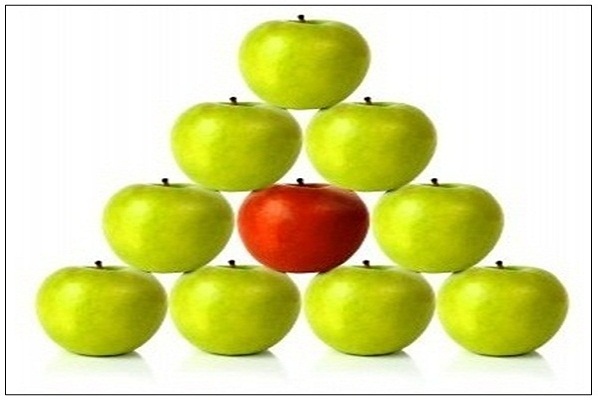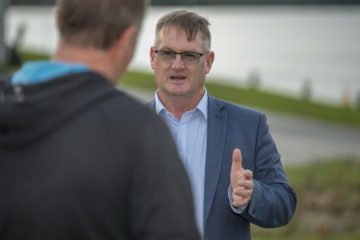High Performance Sports Systems – The Non System System.

So Great Britain has an outstanding high performance sports system.
Australia had one a few years ago…and they hope to have it again.
The “Eastern Block” had some brilliant high performance sports systems – systems which influenced the development of high performance sport all over the world in the three decades since.
The Chinese have a huge one driven by State money and a very large population.
The French are doing some great things in theirs.
The US has a strong high performance system driven through the College system.
South Korea, Japan and India are growing theirs. Canada is re-building theirs.
The South Americans will be working hard to make their high performance systems the best in the world now that Rio has been announced as the host city of the 2016 Olympic Games.
South Africa is building one on the back of the Football World Cup.
Seems like every nation in the world has to have three things – a flag, a carbon policy and a high performance sports system.
Here’s the thing…..none of them do what they are supposed to do….none of them actually produce winners.
Every nation is looking to build the “Holy Grail” of high performance sport: A system which guarantees the sustained success of athletes and teams in international competitions.
The ten fundamental laws of having a great high performance sports system are:
- Find talented athletes (i.e. put in place a talent id program);
- Increase (effective and targeted) funding to high performance sport;
- Increase the focus on finding, training and developing world class coaches;
- Increase the focus and funding for sports science, sports medicine and analysis technologies;
- Increase the access to high quality international sporting competitions;
- Provide world class high performance sports facilities, e.g. training facilities, gymnasiums, competition venues;
- Recruit, train and retain quality sports management staff;
- Put in place ongoing “audit” and continuous improvement systems;
- Invest in the latest equipment, technology and IT;
- Manage the system through an integrated high performance sports system network – typically Academies and Institutes of Sport.
Regardless of when and where high performance systems have been developed around the world, invariably most or all of the above “boxes” are ticked: they are the accepted “non negotiables” – the universal fundamentals of high performance sports systems. They must be correct – because everyone is using the same ten “laws”!
Governments do some benchmarking, come up with a list of things that other Governments have put together in their high performance systems, give it a funny new made up name like S.P.O.R.T. – Sports Performance and Olympic Race Training – put some money behind it and announce to the world that their “new” system is the best in the world.
Football teams and sporting organisations do the same thing by copying whoever won their competition last season – it’s about copying…it’s about copying…it’s about copying…it’s about copying…it’s about copying winners.
However, there is a huge difference between having the world’s best “tick the box”, high performance sport system and producing winners – i.e. producing athletes, coaches and teams who win at the highest level.
It is much easier to talk about having a great system and how you have all the high performance system elements in place than to talk about, think about and strive for winning.
The ten fundamental laws of winning in high performance sport are:
- To be different;
- To be unique;
- To do things first;
- To be more creative and more innovative than your competition;
- To take risks;
- To create and sustain a culture which is focused on winning – on being the best;
- To fight hard and compete with total commitment;
- To not accept anything but the best from everyone involved in your team: athletes, coaches, staff, management, Board – everyone must be committed to winning;
- To see winning as not just a destination but an attitude that pervades every aspect of every thought and action within your team every day;
- To not compromise on the consistent implementation of the first nine laws.
And this is the difference between a systems led approach and a winning focused approach. Having a great high performance sports system means having an outstanding high performance environment with all the programs, facilities, equipment and KPIs lined up and functioning: whereas winning means to come first.
Regardless of the nation, the team, the people, the geographical location, the size of the population, the money invested in the system, two clear and undeniable statements can be made:
- Systems do not create winners. They produce consistency. They provide opportunity. They provide a measurable quality control framework. They provide high quality environments for training and competition but systems by themselves do not create winners;
- The winners in all the high performance sports systems around the world for the past fifty years have been athletes, coaches, managers, teams, researchers, scientists and leaders who have thought and acted differently – who have been unique but who have had the good sense to tap into the opportunities provided by the high performance sport system.
So as you all head back to work in the new year, ask yourself this question, “Am I here to ensure my athletes, coaches, management and staff have the best possible system – one which provides them the opportunity to do their best – one which has all the elements one would expect to find in a high performance sports system” or “am I here to win?”
Because they are two completely different things.
- Are you encouraging difference?
- Are you embracing uniqueness?
- Are you celebrating creativity and innovation?
Or are you just another “audit bunny” sitting in an office ticking the boxes and kidding yourself you are driving the world’s best high performance sports system?
Happy New Year.
Sincere thanks to Bill Sweetenham who stimulated this post over coffee and breakfast during the Christmas Holidays. To read more about Bill, please check out Bill’s web site.
Wayne Goldsmith
Wayne Goldsmith is a performance focused coaching professional with more than 25 years experience working with some of the world's leading athletes, coaches and teams. Wayne offers a wide range of coaching services for professional coaches, corporate executives and organizational leaders which are based on his experience delivering winning performances in high pressure sporting environments across the globe.



9 Comments
Ben Rattray · January 4, 2010 at 11:49 am
Wouldn’t a good
“Point 8: Put in place ongoing “audit” and continuous improvement systems”
address the winning part of the issue anyway?
Wayne Goldsmith · January 4, 2010 at 7:10 pm
Thanks Ben.
I agree with you in part but my experience is that audit usually means internal review, which is about as useful as singing to your parents on your birthday: everyone feels good but you don’t get any meaningful feedback!
Also, continuous improvement to most people means tracking the progress of pre-existing plans and not embracing new, exciting, innovative and creative ideas to accelerate learning and enhance the performance of the people and program.
Thanks again for the comments.
WG
james marshall · January 5, 2010 at 2:02 am
England Hockey have embraced the “single system” approach, which basically means no one can try anything new at any level unless it has been first approved by the Central governing body.
Brilliant news for all innovative Coaches at the grass roots level.
Wayne Goldsmith · January 5, 2010 at 2:20 pm
Thanks James.
As we both know there are companies promoting a “one size fits all athlete development model” all over the world which, although the basic concepts make good sense, the ability of these “magic models” to produce winners at elite level has not been demonstrated anywhere.
Yet, governments keep falling for the “super sports system sales pitch” – i.e. people selling a miracle, guaranteed to succeed sports system to help the government solve all its performance problems.
The lessons are there for all to see but few want to (or can) see them…..do it your own way, embrace difference, creativity, innovation and uniqueness, do not copy systems and structures outside of the culture that created them and….above all, there is no one single “magic model”, system or ideology that is guaranteed to work for all athletes in all sports in all nations…….is it that difficult to see????
I would go so far as saying that the nations, sports and coaches who will be the most successful in the future will be the ones who DON’T buy in to one of the “magic models” currently in vogue.
Other nations are experiencing what you describe. Some sporting federations and even government funded national sporting systems have become “zealots” of the “magic model” formula and will only fund coaches and athletes who comply with rules and systems of the “magic model”.
Like you say, so much for the innovative and creative new generation of coaches trying to forge the future.
Thanks again,
WG
Nick Johnston · January 7, 2010 at 8:50 pm
Hi- I probably don’t have enough experience to be weighing here, but I wonder if this is the furthest reach of the swing of the pendulum, and sooner or later coaches and managers will recognise a need to strip back the ‘system’ to find the sweet spot allowing people the freedom to be individual/creative, but providing enough discipline to put them in the best position to use the freedom profitably.
Are there enough sporting organisations in the world that have had a prolonged period of success based on talent development to figure out what is truly important and what just seems important? Or is this what the single system messiahs are claiming to have done already?
Wayne Goldsmith · January 12, 2010 at 12:51 pm
Thanks Nick.
Here’s my crystal ball on the matter.
After the London 2012 Olympics, some genius – hopefully me because I need the money – will come up with what I call THE NON SYSTEM SYSTEM or NSS. This NSS approach will state that each athlete / coach will be funded to prepare to the best of their ability and funding will be targeted to the specific, unique needs of the individual. There will be a worldwide “anti-high performance system” philosophy embraced by most of the leading nations preparing for Rio 2016.
This will go on for one-two Olympics before it too will be shown to have some deficiencies (i.e. nothing is perfect or permanent) and the pendulum will swing back a little towards the systems approach. So by 2024, I think most of the world will have a mature, sophisticated high performance sporting philosophy with the right balance of systems support and targeted individualised non-system support.
Seems like most progress happens like this. Change is hard to initiate but once it gains momentum it is impossible to stop shifting too far and over-correcting. Then things calm down and things shift back just a little to a more realistic level.
At the moment, (unfortunately) we still have a lot of know all high performance sports systems “pushers” who are still finding naive would be zealots all over the world to pay them to come in to set up miracle one size fits all solutions for athletes and coaches.
Bring on the future.
WG
Jeremy Pryce · January 11, 2010 at 8:19 pm
Interesting arguments. I agree that systems should only be viewed as providing environments that may promote success. However, I don´t agree with your claim that winners are “those who have thought and acted differently”. Most winners, stripped of their idiosyncratic or cultural trappings, think in the same way. In the end it´s about understanding the uniquess of an individual or group of individuals an monitoring behavioral modification to enhance the individuals (or groups) personal power.
Jeremy Pryce
Mölndal, Sweden
Wayne Goldsmith · January 12, 2010 at 12:36 pm
Thanks Jeremy.
What I mean by difference and uniqueness is that the greatest people I have met – athletes, coaches, managers, leaders, scientists, artists and others do not comply with the rules, regulations and standards of the majority – they set new standards and take the lead in changing their industry. So it is amazing to me that even in the most lucrative and supposedly professional sporting competitions, e.g. NFL, Premier League etc that coaches are generally very conservative – preferring to copy others than actually lead the introduction of new ideas and innovations.
To add to this, the government funding agencies of many nations are now putting in place funding rules that specify to coaches, athletes and organisations “do it this way or we will not fund you”. They are putting limits and restrictions on creativity and innovation. And…anywhere in the world, at any time in history, where governments have tried to stifle individuals being unique, the system has failed….as the current high performance systems will undoubtedly fail.
Thanks for your comments.
WG
Wayne Goldsmith · February 2, 2010 at 4:33 am
Thanks Aaron. Appreciate the support.
Agree with your comments too. A lot of people get confused on the issues of Creating A High Performance Environment and Creating a Winning Culture: they are two very different but related things.
I have seen a lot of people spend a lot of money trying to find a way of building a winning team but often all they end up with is some nice new buildings and some fancy gym equipment. Creating a professional looking high performance environment is easy – making it work to it’s full potential is completely different.
WG
WG